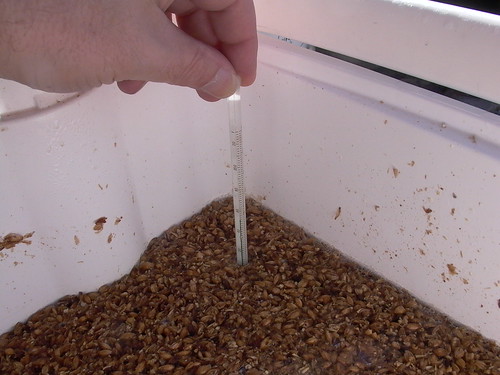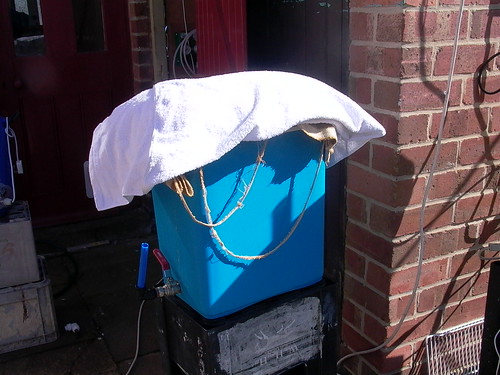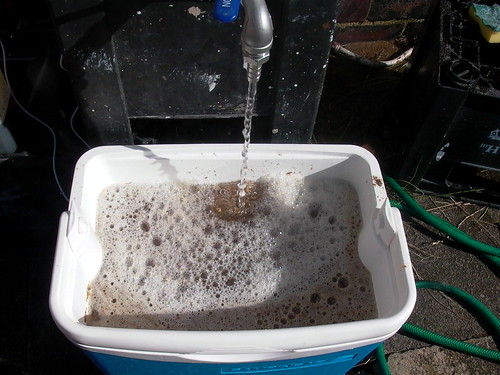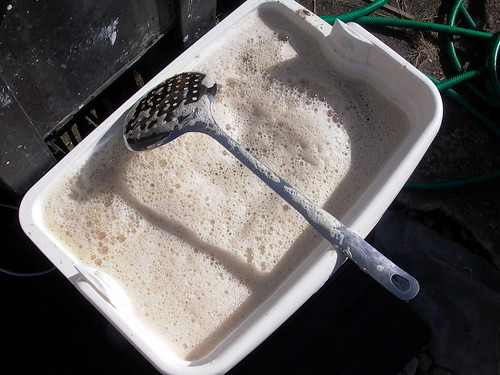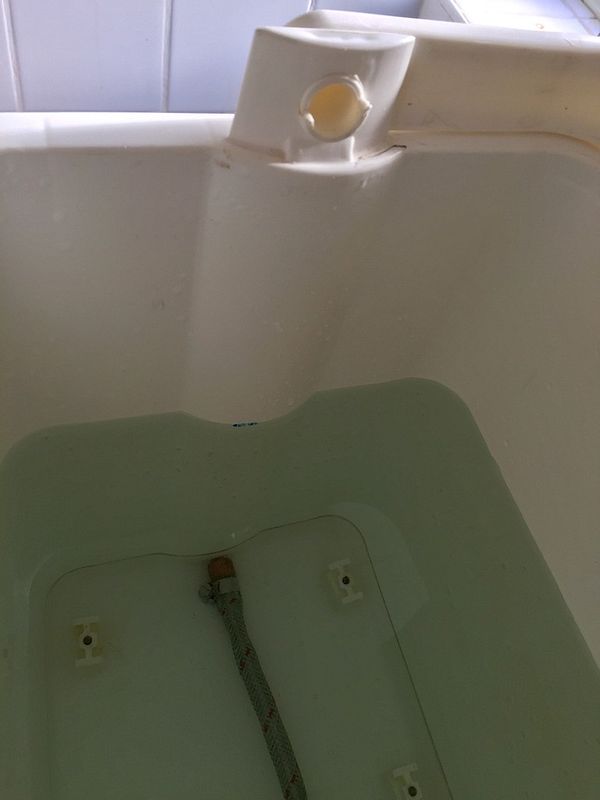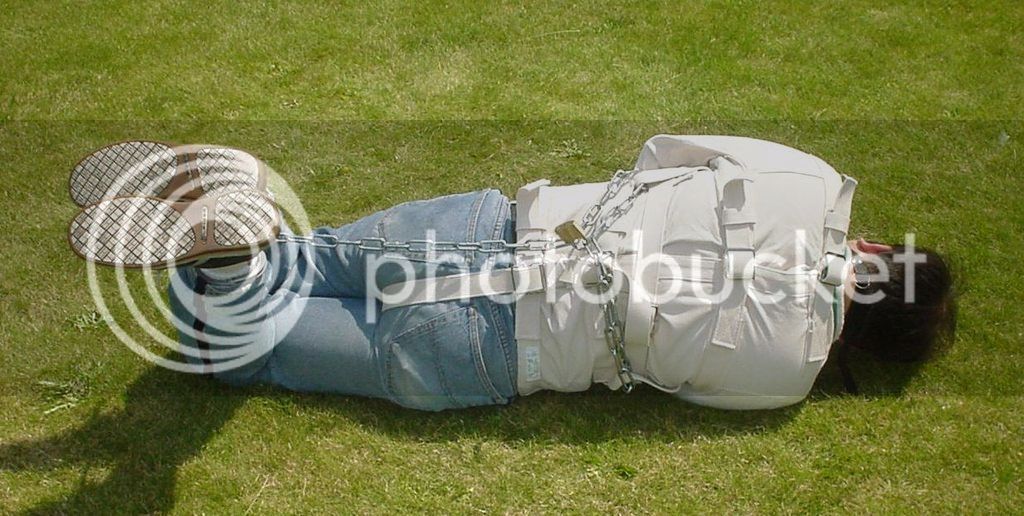Hi all,
Been a long time since I used the 3 tier AG system...
But unfortunately my memory is shot! And learning dificulty set in.
After contacting Fil who I bought the system from for all the losses etc.
But tbh I struggled til now, piecing the info into what made sence to me..
Thx Fil for your emails & pm's.
So looking how I should work out it:
AG losses
boiler - 1l dead space
hops - ~0.5L (for 100gm of hops)
Boiler off- ~2L
mash tun- 1l (with manifold)
grain - grain bill amount 5.19kg
(grain -5.19l )
HLT - 3.5L (dead space again)
= 12.74l
= amount to have at the end..(23l) + losses.thats strike water + sparge water.
= 35.74l
The boiler was a PITA could put 5l as usual...had to put 20l then the water run out!!! Due to the type of the manifold..
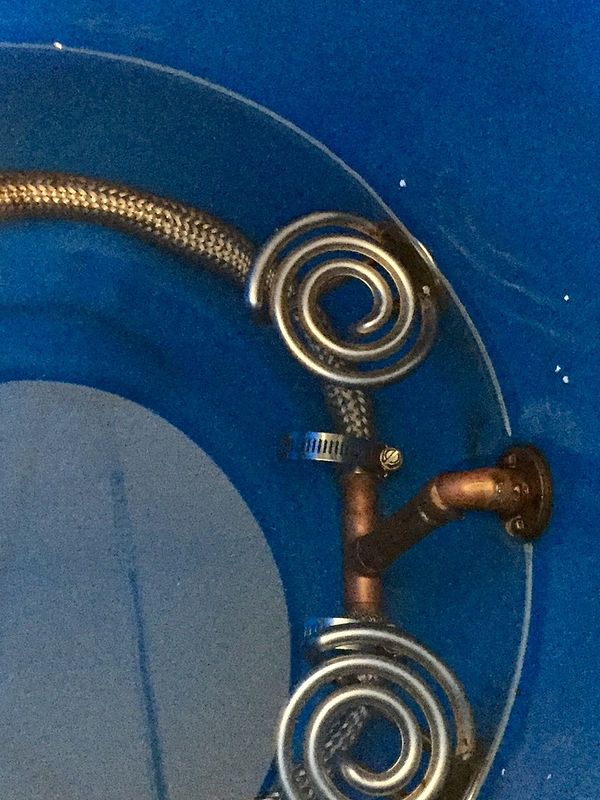
I knew I had 27l post boil before cooling...
Cooling was approx 4l lost, ending up with 23l in the FV.
Is there anything wrong with my working out? Lol
recipe I'll use.
Centurion Ghost Ale clone 23l
3kg Marris otter
360g crystal 90l
970g choc malt
850g roasted Barley
= 5.19kg grain bill
8g fuggles @ 60 mins
10g challenger @ 60 mins
5g Bramling cross @ 15 mins
8g fuggles @ 15mins
5g Bramling cross @ 5 mins
=34.02g hops bill
Irish moss @ 15 mins
English Ale Blend WPL085
Compton tablet, Gypsum in the HLT.
Mash @ 68C
Est OG 1.048
Est FG 1.015
Est ABV 4.4%
I've spent been days like a jigsaw getting the info how I made my brews all them years ago!
And I've thinking I'm confident to use the kit again, for notes and when my pal wanted the system..
It'll be a week or so once I finalise the set up and the recipe.
One thing I would have transfer the post boil Into the GF for cooling as my wort chilling is still up Scotland..
Any pointers in this setup and recipe I'll be really apreciate it.
Been a long time since I used the 3 tier AG system...
But unfortunately my memory is shot! And learning dificulty set in.
After contacting Fil who I bought the system from for all the losses etc.
But tbh I struggled til now, piecing the info into what made sence to me..
Thx Fil for your emails & pm's.
So looking how I should work out it:
AG losses
boiler - 1l dead space
hops - ~0.5L (for 100gm of hops)
Boiler off- ~2L
mash tun- 1l (with manifold)
grain - grain bill amount 5.19kg
(grain -5.19l )
HLT - 3.5L (dead space again)
= 12.74l
= amount to have at the end..(23l) + losses.thats strike water + sparge water.
= 35.74l
The boiler was a PITA could put 5l as usual...had to put 20l then the water run out!!! Due to the type of the manifold..

I knew I had 27l post boil before cooling...
Cooling was approx 4l lost, ending up with 23l in the FV.
Is there anything wrong with my working out? Lol
recipe I'll use.
Centurion Ghost Ale clone 23l
3kg Marris otter
360g crystal 90l
970g choc malt
850g roasted Barley
= 5.19kg grain bill
8g fuggles @ 60 mins
10g challenger @ 60 mins
5g Bramling cross @ 15 mins
8g fuggles @ 15mins
5g Bramling cross @ 5 mins
=34.02g hops bill
Irish moss @ 15 mins
English Ale Blend WPL085
Compton tablet, Gypsum in the HLT.
Mash @ 68C
Est OG 1.048
Est FG 1.015
Est ABV 4.4%
I've spent been days like a jigsaw getting the info how I made my brews all them years ago!
And I've thinking I'm confident to use the kit again, for notes and when my pal wanted the system..
It'll be a week or so once I finalise the set up and the recipe.
One thing I would have transfer the post boil Into the GF for cooling as my wort chilling is still up Scotland..
Any pointers in this setup and recipe I'll be really apreciate it.




